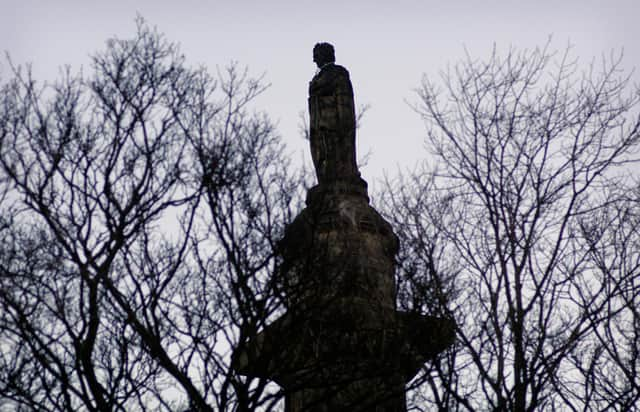Black Lives Matter protest is just the start. Edinburgh must be honest about its slavery past – Angus Robertson


Worldwide protests against racism make inevitable change which must profoundly alter the lived reality for black, Asian and minority ethnic people. “Black Lives Matter” is just the start – we simply cannot go on with fellow citizens facing discrimination, violence and economic disadvantage.
To fully embrace a better future we also need to understand our past in Scotland, learn the lessons about our culpability and ensure we build the fair and inclusive society everybody deserves.
Advertisement
Hide AdAdvertisement
Hide AdSadly, too many Scots and Scottish institutions were active participants in the slave trade or gained from its immoral profits. Scots owned a third of slave plantations in Jamaica and 32 per cent of the slaves on the Caribbean island. Scotland profited massively from the tobacco, sugar and cotton imports, which were all built on the misery of slaves.
Glasgow may have been the nation’s trading centre but the highest number of financial beneficiaries from slavery were in Edinburgh. The Centre for the Study of the Legacies of British Slave-ownership has an online map which allows you to see exactly who profited from slavery and where they lived. Of 424 people in Scotland recorded as profiting from slavery, 131 were in Edinburgh and Lothian. Edinburgh residents lived in the New Town, Old Town, Stockbridge, Tollcross, Trinity, Newington, Morningside, Colinton and elsewhere in the city.
Prominent Edinburgh residents associated with slavery include Henry Dundas, whose statue stands in the middle of St Andrew’s Square. The Tory MP for Midlothian was instrumental in delaying the end of slavery. Also on the square is Dundas House, now the RBS Headquarters, which was owned by his relatives. The statue in front is of the 4th Earl of Hopetoun who put down a two-year slave revolution in the West Indies. In Stockbridge, the Scots painter Henry Raeburn painted numerous slave-owners and was responsible for the disposal of property including the proceeds of enslaved people in Jamaica as a will trustee.
The time has come to properly acknowledge the role of Dundas and others. The campaign by Edinburgh academic Sir Geoff Palmer to reword the history of Dundas is long past time for action. Monuments don’t just reflect the past, they are in pride of place in our present, in our capital city.
Advertisement
Hide AdAdvertisement
Hide AdOver the weekend, protesters in Bristol dramatically removed the statue of slave-trader Edward Colston. He is the man whose ships sent 80,000 men, women and children from Africa to the Americas against their will. Edinburgh-based art expert Dr Bendor Grovenor has said: “Let the Colston statue’s removal be a prompt for councils and museums across Britain to take action to remove similar artworks from display, as well as returning the thousands of cultural objects looted during the British Empire. Start now. We’ve waited too long”.
We need to look long and hard at what memorials say about 21st-century Scotland, irrespective of whether that is Henry Dundas looking down on the nation’s capital from St Andrew’s Square or the Duke of Sutherland at Golspie, who cleared thousands of Scots from the land.
Scots-Asian and head of communication for Amnesty International Osama Bhutta is right to hope that: “Tomorrow’s statues will be for those who helped make people free and equal.”
In the meantime, we need to decide how we ensure that historic monuments are honest about the legacy of the people they depict.
A message from the Editor
Advertisement
Hide AdAdvertisement
Hide AdThank you for reading this story on our website. While I have your attention, I also have an important request to make of you.
In order for us to continue to provide high quality and trusted local news on this free-to-read site, I am asking you to also please purchase a copy of our newspaper.
Our journalists are highly trained and our content is independently regulated by IPSO to some of the most rigorous standards in the world. But being your eyes and ears comes at a price. So we need your support more than ever to buy our newspapers during this crisis.
With the coronavirus lockdown having a major impact on many of our local valued advertisers - and consequently the advertising that we receive - we are more reliant than ever on you helping us to provide you with news and information by buying a copy of our newspaper.
Thank you
Joy Yates
Editorial Director
Comment Guidelines
National World encourages reader discussion on our stories. User feedback, insights and back-and-forth exchanges add a rich layer of context to reporting. Please review our Community Guidelines before commenting.